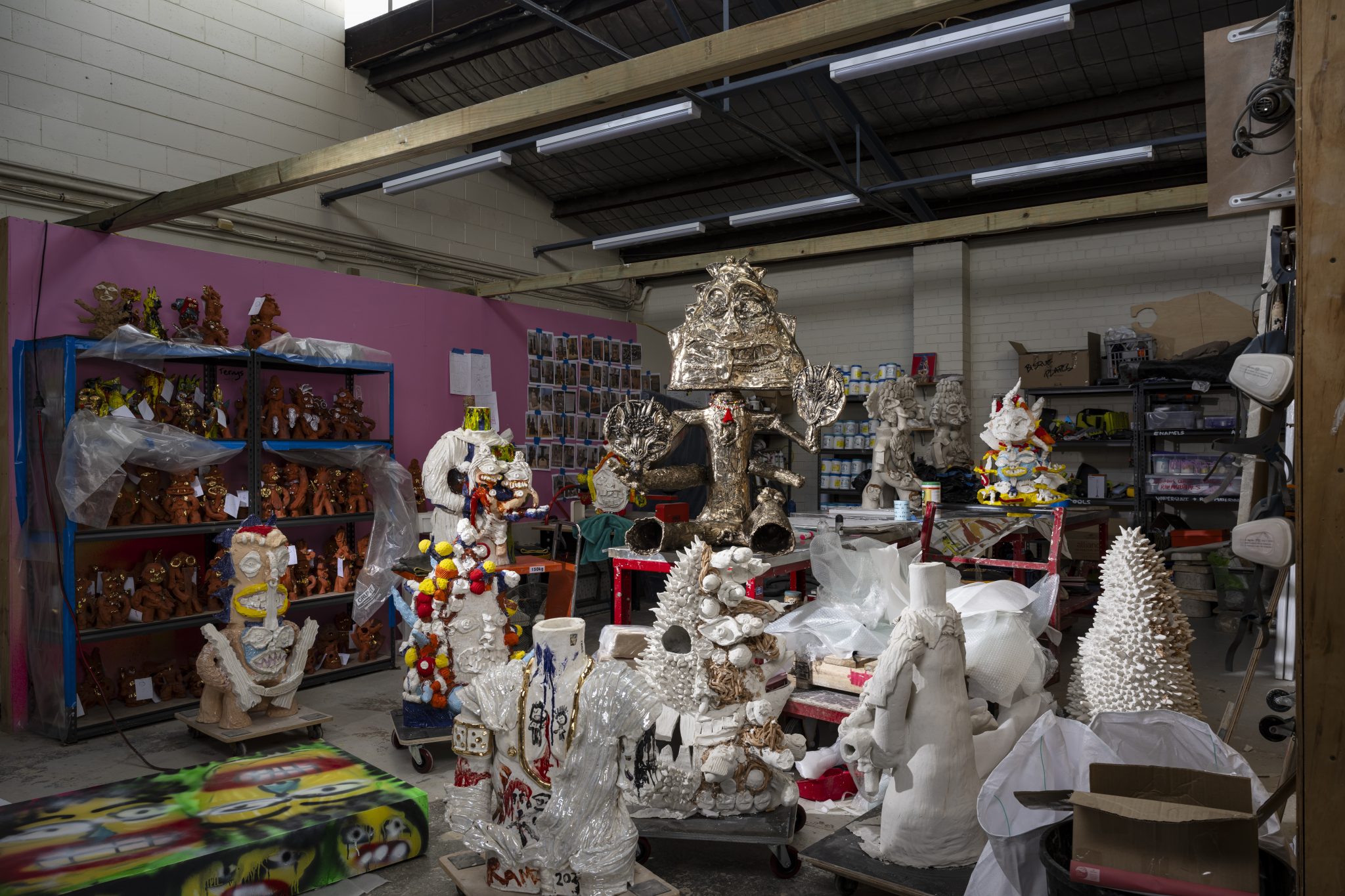The Sydney-based artist is driving towards an idea of sculpture as an animate form, something that embraces change and ephemerality
When Sydney-based Ramesh Mario Nithiyendran starts, over a video call, to describe his plans for his upcoming solo show at Glasgow’s Tramway he’s quick to suggest that he’s not offering audiences a precise ‘message’ but rather proposing a conversation with them. Idols of Mud and Water is set to contain a fountain, a makeshift house made of materials recycled from the local environment and 100 small terracotta sculptures. And mist. It’s going to be “very dystopian”, he promises. There’s a Frankensteinian, lifesize bronze sculpture of a seated figure that’s going to be made up of parts of other bronzes that the artist has produced over the past decade. Which is a way of treating his past work as a kind of language or vocabulary to be reshaped and redeployed.
“A problem with me is that I tend to be interested in lots of things. Like, I’m interested in everything,” he states. His sculptures, largely in ceramics or bronze, reflect this. Expressive and often luridly colourful (Nithiyendran trained as a painter), they contain elements of Gandhara sculpture, which flourished during the first to third centuries CE in the Indian subcontinent (specifically what is now northwest Pakistan/northeast Afghanistan) as a Graeco-Roman-Buddhist mashup following Alexander the Great’s shortlived invasion of the area. There is a pop-cultural vibe that might equate to the world of Amar Chitra Katha comics or Takashi Murakami’s leering, cartoonish character Mr DOB and some of the Japanese artist’s music videos. There are hints of Paul McCarthy in his full Pig Island (2003–10) glory. But there are also works that evoke a bunch of deranged Pokémon, a gathering of mutant avatars in a Hindu temple, a stage set from the Burning Man festival, a gaudy drag race, European traditions of carnival (a day when the social order of the world would, for one day only, be turned upside down) and the colourful South Asian traditions of Mela gatherings. There’s synergy too with the split avatar sculptures of Bharti Kher’s ‘Intermediaries’ sculptures (among them 2022’s Ancestor, a sari-clad Indian mother with 23 children emerging from various parts of her body, which loomed over New York’s Central Park for a year, up to the end of this past summer). And, more generally, with the Hindu pantheon of gods, goddesses and their (often half- human, half animal) avatars. The truth is that they encompass all of these and none of them: a fusion of the artistic traditions of West and East, and perhaps because of that something new (although the example of Gandhara might suggest that culture was always polyvocal and contaminated by inspiration from everywhere, but we just forgot). “I like to keep the seams visible,” the artist says, referring to his seated metal idol in particular, but equally applicable to his work in general.
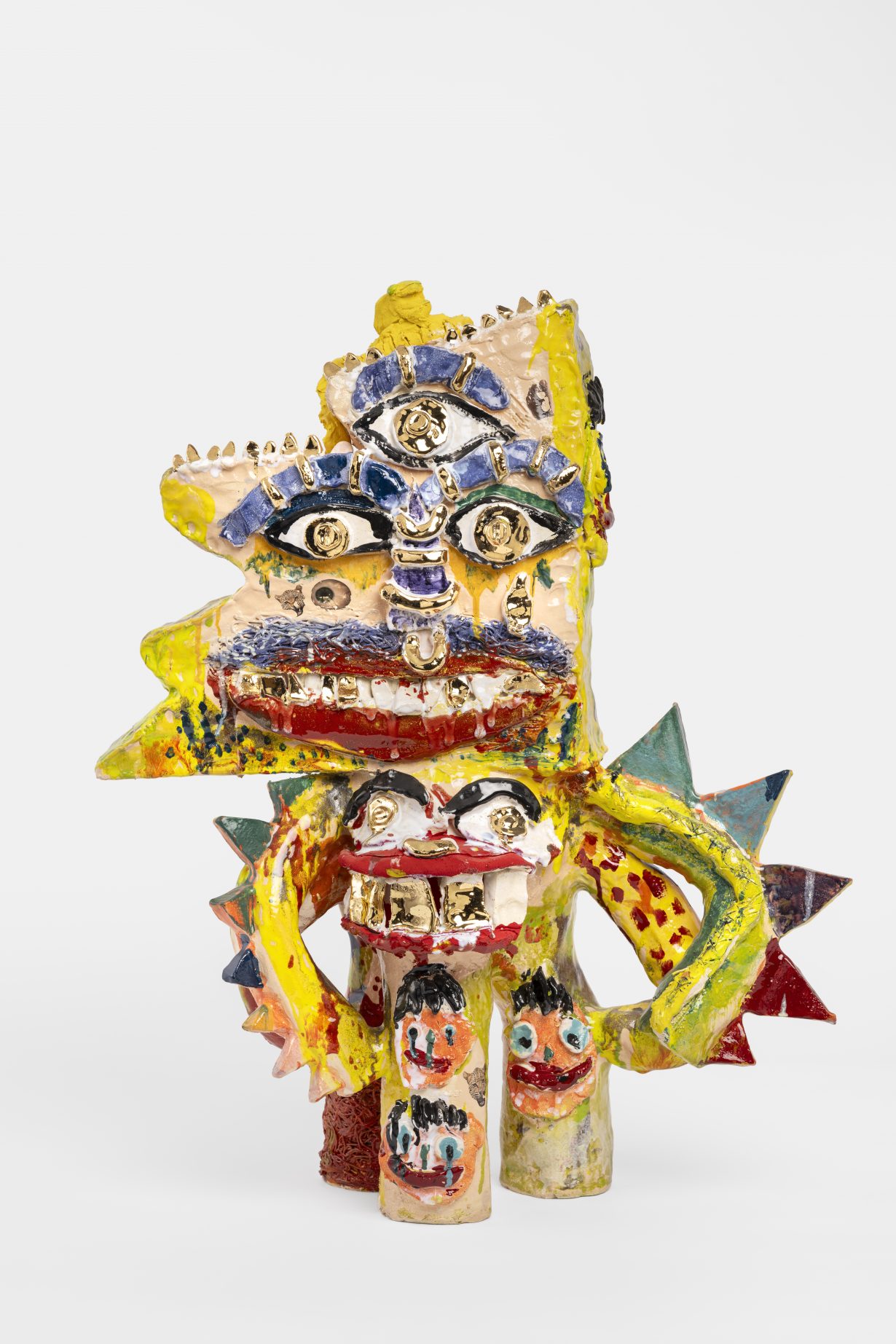
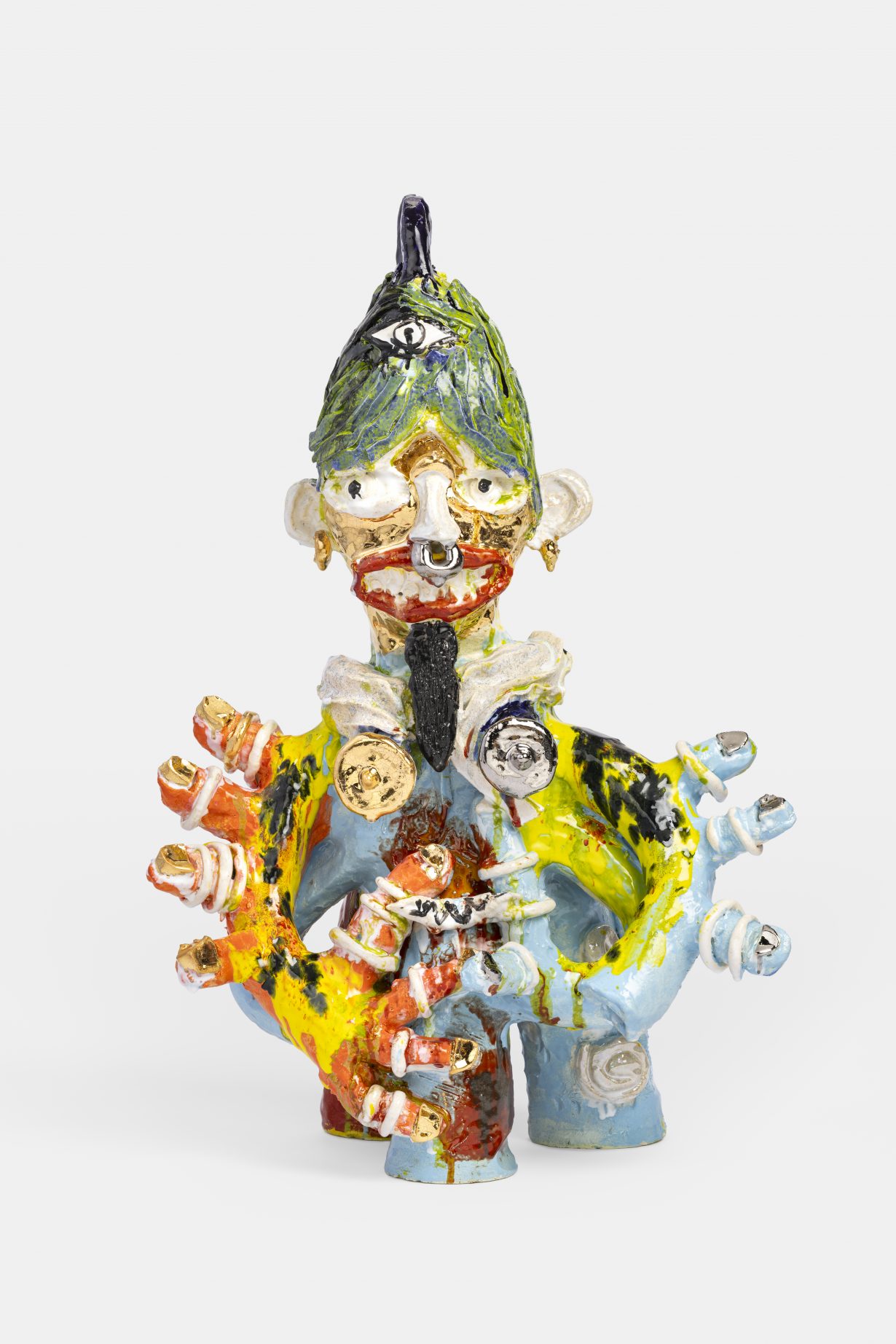
An avatar (a word that derives from Sanskrit) is at once you and not you. A single and a multiple. A physical embodiment as distinct from a spiritual essence. In the Hindu pantheon, for example, one of the avatars of the male Lord Vishnu is the female goddess Mohini (just as many of Nithiyendran’s figures are polysexual or sexually ambiguous). Ganesh has the head of an elephant. You can equally find Hindu temples in which the Buddha and Jesus Christ are also considered avatars of the supreme being. Tradition aside, the pantheon is not necessarily a fixed or stable one. Of course, the word ‘avatar’ is also operative in more contemporary ways, becoming an essential part of the digital and gaming worlds (Nithiyendran has previously said that he would obsessively play games like Mortal Kombat and Tekken until his thumbs blistered). Not to mention contemporary cinema.
Still, when Nithiyendran says, “I love some drama”, I at first hear it as, “I love some dharma”, another Sanskrit term, one that’s hard to translate into English but that is a foundational concept in the religions of Hinduism, Buddhism, Jainism and Sikhism, and means something like the righteous order of things. On a cosmic level. Nithiyendran however did say “drama”, which might, in turn, reflect a desire to destabilise or queer any received ideas about order. He is referring to his plan to float some mist into his presentation in Glasgow (in the past he has also created kinetic works that are triggered by motion sensors, and experimented with various types of dramatic lighting). And the fact that he thinks his fountain will act like a giant deity and bring about diluvial terrors. But it might, he also suggests, be some sort of protective figure. “It’s ambiguous,” he eventually concludes. And ambiguity is definitely a subject to which the Sydney-based artist returns again and again in what he has previously described as his ‘hyperbolic’ work.

At Sydney’s Carriageworks, as part of Australia’s contemporary art survey The National in 2017, that meant The Cave: a largescale, carnivalesque, totemic idol, the body of which was made of unfired clay hand-plastered onto a chickenwire frame, its two grinning, leering polystyrene heads stacked one atop the other, the whole garlanded with pulsing cables of neon light. The installation had a somewhat frenzied, energetic appearance. Smaller satellite figures – colourful, carnivalesque and decorated with gold – on plinths covered in graffiti further suggested a clash of permanence and impermanence, or the aftermath of some great event. As a total environment, the totemic installation seemed to contain all forms of public art – from monuments to graffiti to neon advertising signs. There were figurative wall drawings (hinting at self-portraiture to those who know what Nithiyendran looks like) with red neon erections seemingly ejaculating into the space that spoke to the machismo of most conventional monuments (which, from Nelson’s Column in London’s Trafalgar Square on, tend to privilege a certain phallic aesthetic), in a way that was at once comic, cutting and ultimately undermined by the somewhat ramshackle funfair aesthetic of the installation as a whole. “A past-future-present mashup,” was how Nithiyendran described it at the time. Which in turn captures the realities of our congested contemporary urban space and its vague promises of something for everyone. Sex included. While at the same time gesturing towards the cave as the ur-dwelling and the elemental properties of earth, moisture and light as the fundamental building blocks of life. Not to mention, of course, of the artwork itself.
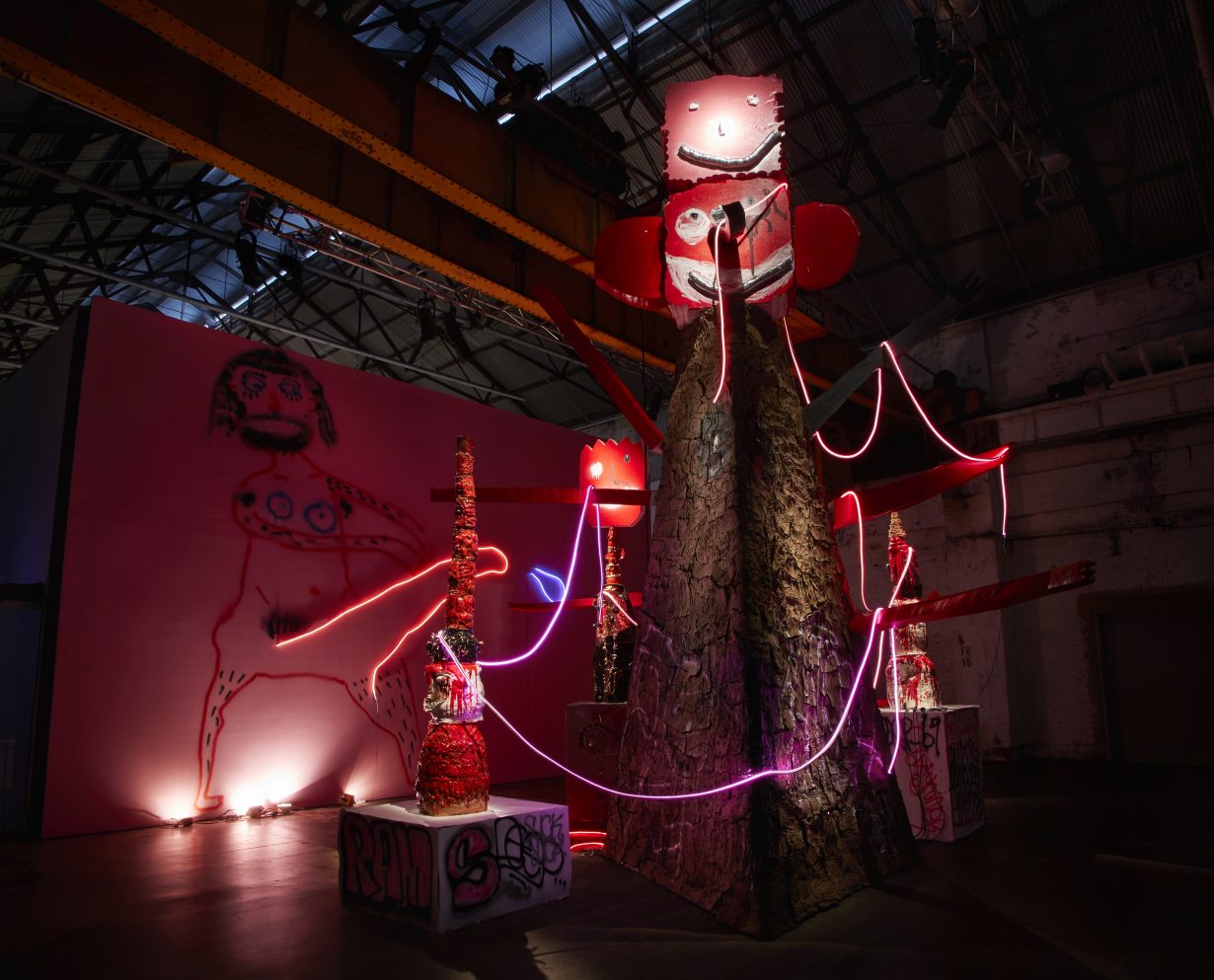
In part Nithiyendran is driving towards an idea of sculpture as an animate form. Not the common-sense or traditional idea of a static and eternal monument, but something that embraces change and ephemerality. Something that is constantly between states. And in the context of exhibitions, something that engages a central conversation between what we are shown and what we want to see. And right now what people (not just art people) want to see, following a general breakdown of what in the UK is called multiculturalism, is the performance of nationalism and sectarianism, as well as race and identity politics.
“Australia has a very anxious relationship to national identity,” he begins as we discuss the subject, “because of very recent histories of colonialism [we’re talking as Australia prepares to vote in a referendum on The Voice – a proposal to give indigenous First Nations people a greater say (though far short of a legally binding one) – in the country’s politics; it has since been put to the nation and lost]. I think that kind of identity politics narrative is very digestible for a lot of audiences, but ever since I was at art school I always thought about rejecting binary ways of presenting my work. So never thinking ‘this work is a counternarrative to’, or ‘this is in opposition to’; instead, I always thought about how can we actually create parallel narratives that are autonomous and side-by-side with other narratives. So almost a decentring action that was about not countering but showing autonomy, and I think that’s where those kinds of identity aspects come into it. Because I think there’s a real queer sensibility to all the sculptures.
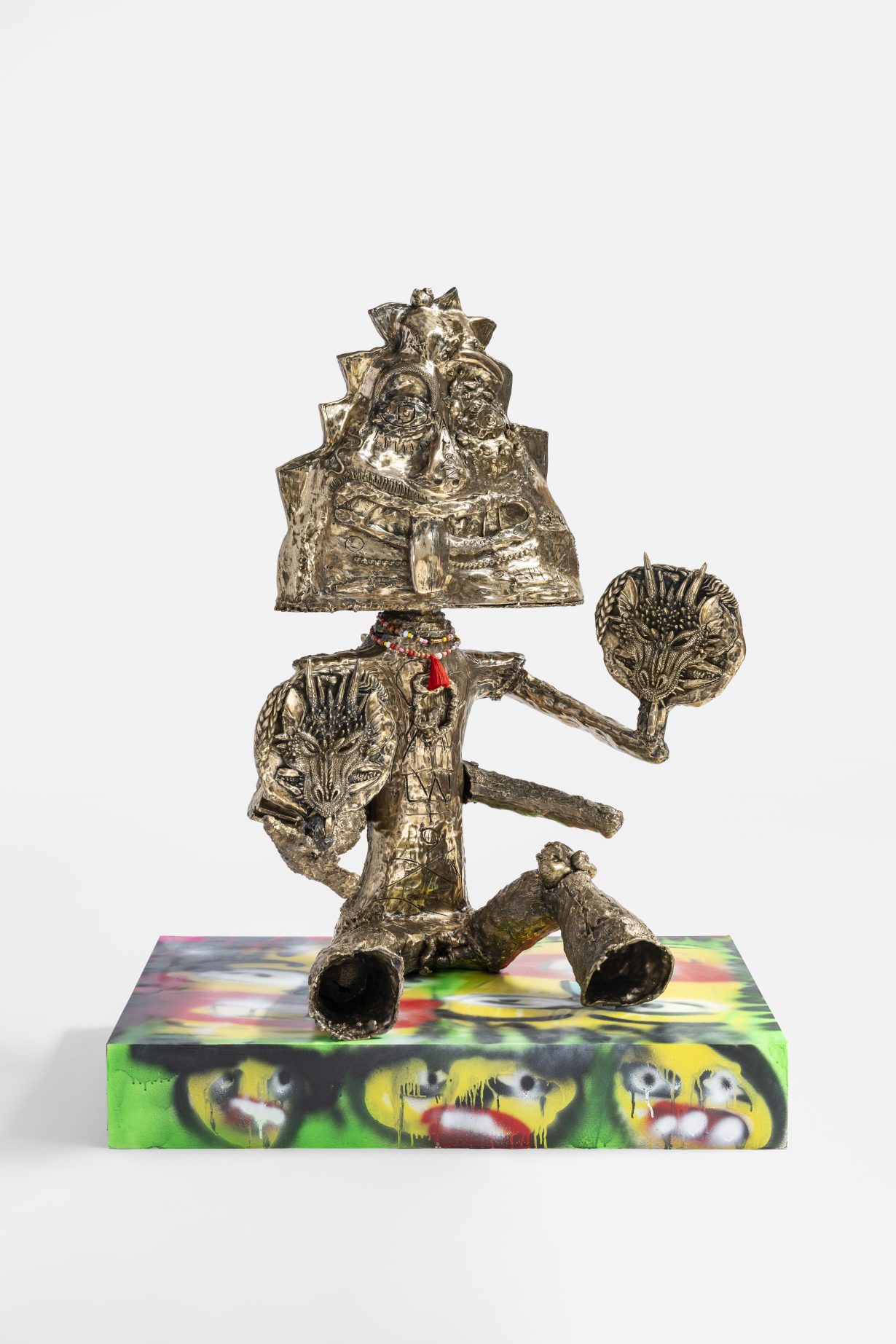

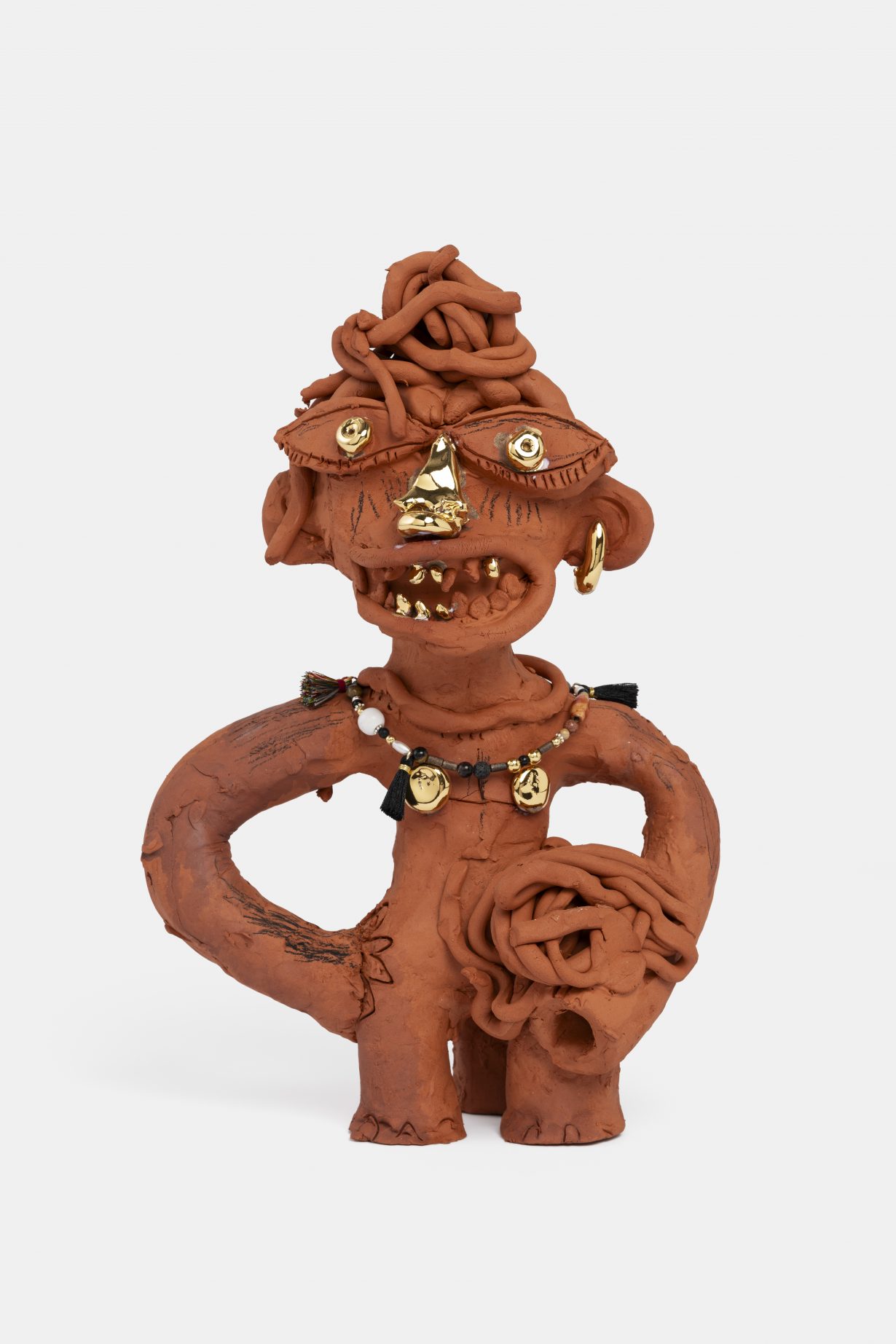
“I found that I’ve always avoided the hot, hot terms that contemporary art uses. So I never say my work is about being Tamil diaspora, blah, blah, blah… I’m very conscious of these kinds of language trends. One week one of these words means something, and then three weeks later it means something different. So I’ve tended to always try and avoid that kind of very loaded, hyperresponsive language when constructing a cultural framework around the work I’m making.”
But that doesn’t stop other people from doing it. Most articles about Nithiyendran focus on his being born in Sri Lanka and then migrating with his Tamil parents to Australia [as refugees from Sri Lanka’s civil war] one year later. And that his mother was Catholic and his father was Hindu. That in some ways this makes him both South Asian and Australian and representative of both cultures.

“I’m sure they do,” he says as we discuss the projections critics and viewers might impose on his work. “But I think the benefit of being a living artist is that you have conversations with people. And I try and be very strategic with things like my bio. For example, I don’t try and overplay elements of either sexual or cultural identity, instead I actually acknowledge where it is through description, you know, within the work. And I think sometimes my disavowal of that framework is about actually acknowledging that sometimes the strength or a real core part of the creative process is intuition and emotion rather than something conceived to be more planned and cerebral, and I think we could have more space to talk about that. To talk about studio processes in art discourse generally.”
And that, in part is what he wants his upcoming show to do. “Normally I’m quite over the top with the colour, but very recently I’ve been looking at the histories of terracotta, and building with mud or building with earth, and very early types of deitylike forms. There’s this occurrence, you know, around the world where literally earth moves, we’ve got landslides, flooding, different kinds of catastrophe that have roots historically in mythology, but also since the beginning of time. There’s more of a panic around these instances today because of climate change. I’m kind of thinking about this notion that actually building figurative sculpture from the earth, you know, is a political or a discursive act, particularly at this stage, because of that. And water is in every aspect of everything I work with, but how can we actually use water as an expressive medium. And in the past, I’d use lighting and electricity as an expressive medium, working with neon, neon flex-lighting, sequencing, smoke, and creating those kinds of atmospheric effects, but I really wanted there to be a sense of movement and sound that came through the flowing and movement of water.” And that focus on movement and fluidity – of materials, cultures, religions, identities, humans and nonhumans, sexualities – and the stuff of which we are all made is today something radical in itself.
Idols of Mud and Water is on show at Tramway, Glasgow, from 24 November to 21 April
